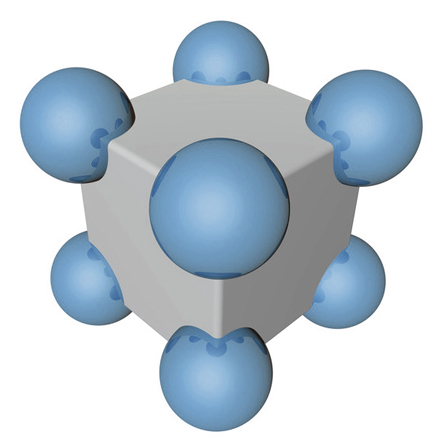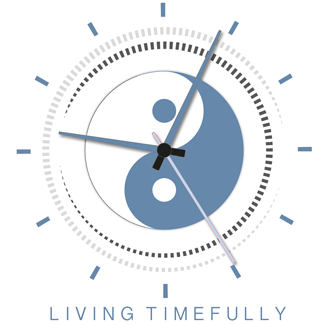The Noos Channel

I am really honoured and excited to be a member of a new group of authors with a ‘publisher’ called Avanoo who has introduced quite a revolutionary model.
For starters, the ‘publisher’ doesn’t create books but ‘Noos’ which are 2 to 3 minute audiovisual delights to open minds and expand horizons …
‘Readers’ don’t take in these gems of wisdom in one sitting, they are delivered by email daily so they can be savoured over the course of 30 days.
I’m also doubly honoured to be interviewing each and every fellow author for the Zone Show Channel over the coming months!
Creating an Interruption Barrier
 It said that every time we switch away from a task, it takes around five minutes to tune fully back into what we were working on. This means if we get just 12 interruptions a day, we lose around an hour in productivity.
It said that every time we switch away from a task, it takes around five minutes to tune fully back into what we were working on. This means if we get just 12 interruptions a day, we lose around an hour in productivity.
Obviously, we can relatively easily remove self-inflicted diversions by switching off email, cell phones and social media. There’s an added bonus to be gained here. When we read less emails and interact less on social media, we create less noise in other peoples’ worlds and in turn they create less in ours.
I am currently having a self-imposed week of reduced social media involvement and I am amazed at how much more time I have to get more done. I also feel less anxious about checking in to see who’s talking about what – and me! I am just checking emails three times a day and only replying to everything in one session. It took a while to wean myself away from constantly checking in but now I am on the ‘other side’, it is strangely calming.
Even if you manage to tame the inner desire to divert your attention from the task at hand, external influences can darken your door just when you are fully engrossed and immersed in the creative zone. This is especially true in open plan office environments where conversations and other peoples’ phone calls can so easily disrupt our concentration.
Quite possibly, the worst type of interruption is that gentle knock on the door and a voice saying, “Have you got a minute?”
We never say, “If I had a spare minute, I would have sought you out and offered it to you.”
Instead we acquiesce and invariably that single requested minute morphs into several.
To prevent this kind of unrequited attention sapper, we can set up an interruption barrier. Like all strong defenses, it is best if it has several layers to stop the most ardent of penetrators.
Layer 1 : Physical
The first layer can be physical. When we are working on a creative task that needs our undivided attention, we can either work from home or lock ourselves in an office labelled ’Do Not Disturb’.
Layer 2 : Cultural
The second layer is both cultural and temporal. In smart organisations with intelligent employees, the time and space of others is respected. Simply announce the time and space you like to be interrupt free. A good practice is to designate the first working hour of the morning or after lunch as the time you need your own space. If everybody adopts this practice, nobody is therefore free to interrupt anyone else.
Layer 3 : Mindful
The third layer is slightly esoteric, yet the most potentially the most powerful.
It is postulated, by Carl Jung and other, that all thought permeates through a collective field. So if a person pops into your mind, it is possible that they are thinking about you just at that instant.
The reverse is also true. While you are working on a creative task, if your attention wanders and you think of somebody or other, then they might just think, “Ooh, I wonder if so and so is not busy and might be able to help me on this.”
So it is possibly our thoughts of others that cause them to interrupt us.
Over the years, I have noticed that the phone never rings when I am writing a chapter of a book or a blog. Yet, just a few minutes after a finish, it does. I realised I must have been doing something to stop my thought forms from leaking out.
The clue is this. Every day before I write, I meditate for 10 to 30 minutes. When I start writing, I remain in the meditative state. This means my internal dialogue is silent so I am not radiating any thought forms. The only ’words’ passing through my head are those that are passing through my finger tips typing these words.
This is especially true right now.
What is Channelling?
In this month’s webinar on the 28th November, I’ll be explaining how to channel a book (or anything creative – be it words, music, art or even science).
In this short interview, Ursula O’Connnell asks who and what I channel and how I got into channelling …
and if you want to find out more, register for the webinar for free here
The Gift of More Time
I woke up one morning last week with an idea. I realised that my Living Timefully Self Study programme could really benefit those facing life threatening conditions.
Less than a week later, that idea has been realised. It is now available completely free of charge to anyone with a terminal illness – and people have signed up already and reported some amazing benefits.
I’ve mentioned it to a few people and perhaps quite rightly they asked some questions of me, I thought my answers back were worth collating and sharing by way of this blog.
Q1 : Why would someone who is ill want to spend any of their precious time taking a time management course?
Living Timefully is unlike most time management programmes. It explores how we perceive time and how we can alter the speed of its passage. So, some people might want the clock to go quicker and some might want to slow it down. People who take the course will learn how to do both and take time under their control.
Q2 : Does the course help with the healing process?
When I developed the course, I did not have healing in mind. Yet people who have taken it report it’s made them less stressed and even cleared up headaches. As the course contains over four hours of meditations and visualisations, this perhaps is no surprise. It is well accepted now that meditation improves well being and increases vitality. So while the programme is not designed to heal per se, it will aid and assist with any conventional or alternative treatments being taken.
Q3 : What does someone need to take the course?
The course can be taken on any device with han Internet connection, like a laptop, tablet or smartphone. The exercises are best done with earphones on and for some you will need pen and paper. It even contains a guide on how to create Bucket Lists. Each week, over a 10 week period, an email will be sent to give access to the next set of ‘Timeful Tasks’ to complete. An hour or so of time a week is all that’s needed. This gift is a gift for lifetime so all modules will be accessible when needed should events mean a week gets missed out.
Q4 : Why are you giving it away free? What’s the catch?
Because I can and there is no catch. I want to give something back for all the blessings I have had bestowed on me. People who sign up will not be upsold to or encouraged to opt in to any sales schemes or scams. I take data privacy very seriously and the names of people on the programme will not be shared with any third parties. If people do benefit from the course and want to share their experience, I would appreciate testimonials but will use them anonymously.
Q5 : How you get proof or check that people are suffering from a life-threatening illness?
When people request access to the course, they won’t get instant access. I ask them to share a little about their condition. I will only block obvious scammers and spammers. Also, I have ways to ‘tune in’ and tell if people are genuine – the clues to how I do this are in Weeks 5 & 7 of the course.
Q6 : How do people request access?
Just go to www.livingtimefully.com and fill in the Request Access form.
Q7 : What if I have a question not addressed here?
Just add your question by way of comment below …

 It said that every time we switch away from a task, it takes around five minutes to tune fully back into what we were working on. This means if we get just 12 interruptions a day, we lose around an hour in productivity.
It said that every time we switch away from a task, it takes around five minutes to tune fully back into what we were working on. This means if we get just 12 interruptions a day, we lose around an hour in productivity.
